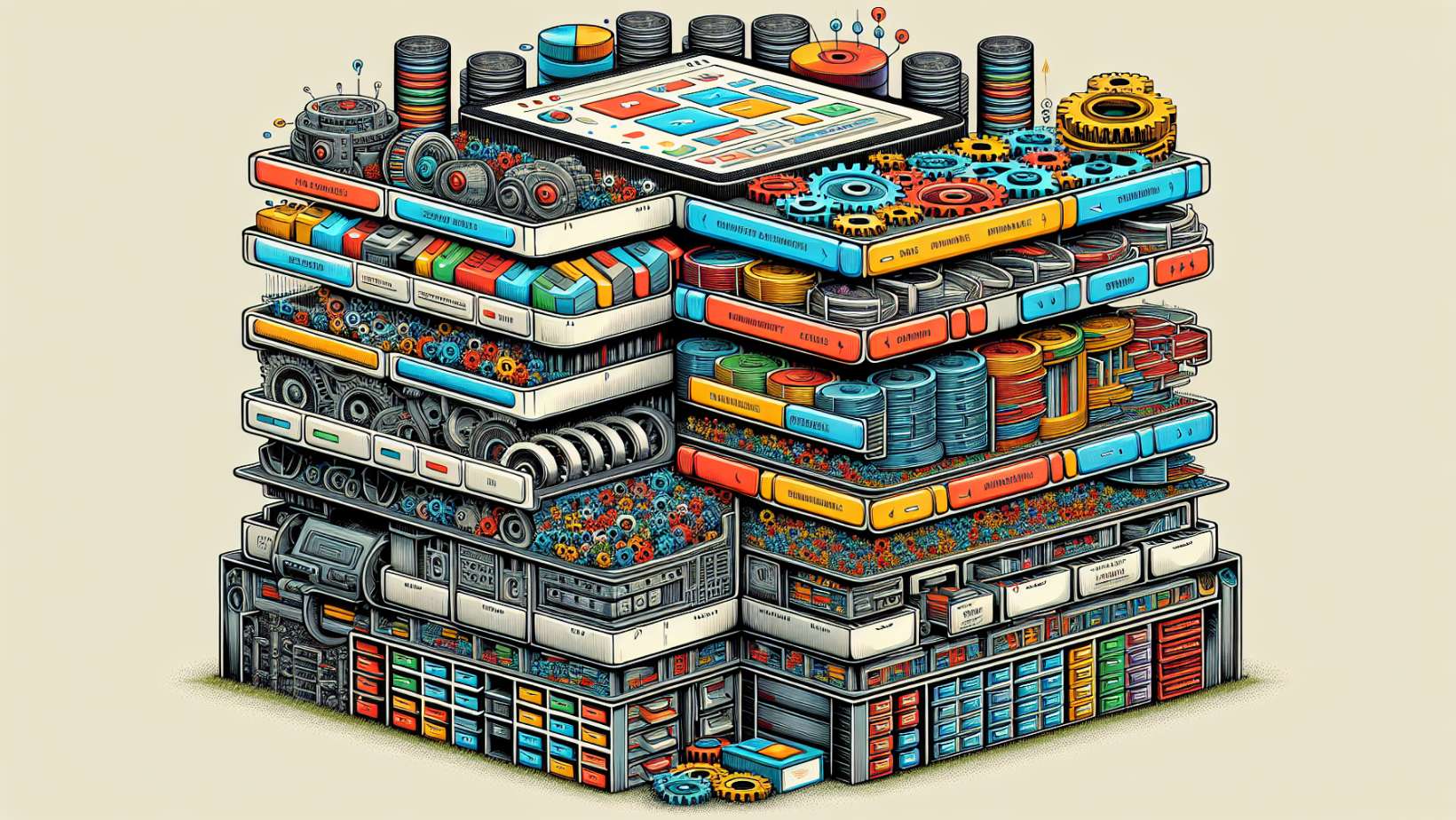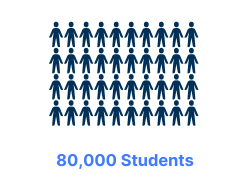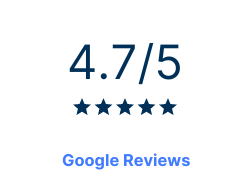
Looking to master the multifaceted world of web development? This ultimate guide to web development is a one-stop resource to learn the foundations, practices, and tools that make up professional web creation. We’ll guide you through front-end techniques, back-end systems, and critical development tools, dissecting how each piece fits into the larger web development puzzle.
The Core Elements of Web Development
Having a robust online presence is no longer optional; it’s a necessity. Crafting a high-quality website that is both functional and visually appealing is a key part of any digital strategy. But how do these websites come to life? It all starts with understanding the core elements of web development: front-end, back-end, and databases.
Front-End Development
Consider front-end development as the facade of a building. It’s the part of the website you interact with directly. Everything you see, from fonts and colours to dropdown menus and sliders, is a combo of HTML, CSS, and JavaScript being controlled by your computer’s browser.
A well-designed front-end not only looks good but also provides an intuitive navigation experience, ensuring that users can easily find what they are looking for through effective user input handling.
Back-End Development
While front-end development is all about what you see, back-end development is all about what you don’t. It’s the engine under the hood, powering the website. Back-end developers handle:
-
the server
-
the application
-
managing requests
-
sending the right response back to the browser.
Various languages and frameworks, such as Ruby on Rails, Laravel, Asp.net, and Node.js, are used, each with its strengths, depending on the requirements of the website.
Databases
Databases store the data that web applications need to function effectively. When you create a profile, make a purchase, or update your status, you’re interacting with a database. Whether it’s the versatile MySQL, the powerful PostgreSQL, or the flexible MongoDB, databases enable web applications to be dynamic and interactive.
Key Technologies and Frameworks in Web Development

Web development has come a long way from the early days of plain HTML. Today’s digital world is built on a variety of programming languages and frameworks, each with its strengths and specialties. Whether you’re creating web pages as simple static ones or complex web applications, understanding the right tools can make all the difference in crafting the perfect web page.
HTML and CSS
HTML, or Hypertext Markup Language, alongside CSS, which stands for Cascading Style Sheets, are the fundamental building blocks of web development. HTML lays out the structure of a website, while CSS styles it with colours, fonts, and layouts. And in today’s mobile-first world, responsive design is a must.
This means websites must adapt to different screen sizes and devices, ensuring a seamless user experience no matter how the user accesses the site.
JavaScript and its Libraries
JavaScript takes websites from static to dynamic, enabling interactive features like image sliders, form validations, and more. Libraries like jQuery simplify JavaScript programming, while frameworks like React and Angular take it a step further, providing a robust structure for building complex applications.
Backend Technologies
On the server side, languages like PHP, Python, and Ruby on Rails power web applications, handling everything from managing user accounts to processing form submissions. Python, in particular, is favoured for its ease of learning and power, making it a popular choice for web applications.
The Art of Full-Stack Development
Being a full-stack developer is like being a jack of all trades. Full-stack development involves both front-end and back-end development, giving developers a broad skillset that can be invaluable in solving complex problems and bringing ideas to life.
The Full-Stack Developer
A full-stack developer is proficient in many technologies, including:
-
Front-end languages like HTML, CSS, JavaScript
-
Back-end technologies such as NodeJS, ExpressJS, and Python frameworks
-
Database systems such as MySQL and MongoDB
A holistic understanding of the development process makes a development company an asset in any development team.
Advantages and Challenges
Being a full-stack developer certainly has its perks. They’re versatile, efficient, and often quicker to get products to market. But it’s not without its challenges. The breadth of knowledge required means they need to stay up-to-date with the latest technologies on both the front-end and back-end.
Essential Web Development Tools

Whether you’re a lone developer or part of a team, having the right tools can streamline your work and boost productivity. From text editors and IDEs to version control systems and deployment platforms, these tools form the developer’s arsenal.
Text Editors and IDEs
When it comes to writing code, text editors and Integrated Development Environments (IDEs) are a developer’s best friend. Text editors like Visual Studio Code, Sublime Text, and Atom are popular for their robust features and extensive plugin ecosystems.
IDEs offer a more comprehensive suite of tools, combining a source code editor, build automation tools, and a debugger in one package.
Version Control Systems
Version Control Systems (VCS) are like a time machine for your code. They track changes and allow you to go back to any previous version of your work, which can be a lifesaver when something goes wrong. Git is the most widely adopted VCS, but SVN and Mercurial also have their share of fans. While VCS focuses on code, content management systems serve a similar purpose for managing digital content.
Deployment Platforms
Once your web application is ready, it needs a home. Web hosting deployment platforms like Heroku, AWS, and DigitalOcean make it easy to host your application, while platforms like Vercel and Netlify are perfect for deploying web projects, including static sites, dynamic websites, and serverless apps.
Current Trends in Web Development

Web development is a rapidly evolving field, with new trends and technologies emerging all the time. Progressive Web Apps (PWAs) and Single-Page Applications (SPAs) are changing the way we interact with web pages, offering faster load times, offline capabilities, and a smoother user experience. Scalable web applications are becoming increasingly important as users demand more efficient and responsive online experiences.
Meanwhile, responsive web design has become a standard, not a luxury, especially with the surge in mobile usage.
Best Practices for Successful Web Development

Building a website is one thing; building a successful website is another. Beyond the technical skills, web development also requires a keen understanding of best practices, including web accessibility, performance optimisation techniques, and web security measures.
Web Accessibility
Web accessibility is about making sure your website can be used by everyone, including people with disabilities. This means ensuring your website works well with assistive technologies like screen readers and can be easily navigated using only a keyboard.
Performance Optimisation Techniques
A slow-loading website can be a dealbreaker for visitors. Performance optimisation techniques, such as minimising file sizes, optimising code, and using caching mechanisms, can help your site load faster and provide a smoother user experience.
Web Security Measures
In an era of increasing cyber threats, web security is a top concern. Secure coding practices, frequent software updates, and regular security audits can help protect your web applications from common security threats.
Career Opportunities and Growth in Web Development
Web development offers a wealth of career opportunities, from web developer and programmer roles to senior positions like Chief Technology Officers (CTOs). The flexibility of the field and the high demand for web development skills across various industries make it a promising career choice for web developers.
Challenges and Future Prospects in Web Development
Despite its many opportunities, web development also presents its share of challenges. From handling large volumes of data to maintaining cybersecurity, there’s always a new problem to solve. But with these challenges come exciting future prospects.
The integration of AI, machine learning, and blockchain technology is set to revolutionise the field, opening up new possibilities and opportunities.
Our Web Development Services and Expertise
As experts in the field, we’re committed to delivering top-notch web development services. We integrate search engine optimization techniques, craft accessible websites, and stay on top of the latest trends and technologies.
Whether you’re looking to build a new ecommerce website or revamp an existing one, our professional website designer has the skills and expertise in web design to bring your digital vision to life.
Elevate Your Skills with Nexacu's Expert-Led Web Development Courses
Web development is a dynamic and exciting field, full of opportunities and challenges. With Nexacu's range of expert-led courses, you can go from mastering the basics of HTML, CSS, and JavaScript to delving into the complexities of full-stack development. Nexacu's training programs are designed to ignite creativity, enhance logic, and strengthen problem-solving skills, ensuring that coding proficiency is matched with practical application.
Whether you're embarking on your web development journey or aiming to elevate your existing skills, Nexacu's courses are tailored to help you succeed in the ever-evolving digital landscape. We hope this guide has not only expanded your understanding but also inspired you to continue learning with the best at Nexacu.
Frequently Asked Questions
What are the core elements of web development?
The core elements of web development include front-end development, back-end development, and databases. These are essential components for building functional and interactive websites.
What is Full-Stack Development?
Full-Stack Development involves both front-end and back-end development, equipping developers with a diverse skillset to tackle complex problems and materialize ideas effectively.
What are some of the current trends in web development?
Some current trends in web development are Progressive Web Apps (PWAs), Single-Page Applications (SPAs), and responsive design. Embracing these trends can help enhance the user experience on web platforms.
What are some best practices for successful web development?
Some best practices for successful web development include prioritising web accessibility, implementing performance optimization techniques, and enhancing web security. These practices are essential for creating a high-performing and user-friendly website.
What are the career opportunities in web development?
Web development offers diverse career opportunities, including roles such as programmers, developers, and Chief Technology Officers (CTOs).
 phone
phone
 email
email
 enquiry
enquiry
























